by Giorgio Cafiero and Matthew Hedges
On July 27, the Saudi-led coalition’s air defense forces shot down a ballistic missile in Taif province, which Houthi rebels fired from Northern Yemen. Despite the successful interception, the launching of this missile, which made it 43 miles south of Mecca, illustrates the extent to which Saudi Arabia and its regional allies have failed to achieve a key objective in their war in Yemen: to deprive the Houthi militants of the means to threaten Saudi national security with heavy weaponry and missiles sourced domestically and abroad.
As Yemen’s gruesome civil war bogs down into a stalemate, with millions of civilians suffering from catastrophic humanitarian and food security crises, only a diplomatic settlement can offer hope for a resolution to the conflict. For any roundtable talks to have a realistic chance of bringing peace to this Arab country, all parties must take seriously the legitimate grievances of Yemen’s major communities. This not only includes the Houthis concentrated in the north but also the southerners who live in the territory the People’s Democratic Republic of Yemen (aka South Yemen) governed from 1967-1990. In Aden and parts of southern Yemen, longstanding grievances against central rule and Yemeni factions from elsewhere in the country are re-fueling a separatist movement seeking to recreate an independent nation-state in the south amid the chaos of the civil war.
In late April, Yemen’s exiled and embattled president, Abd Rabbuh Mansour Hadi, sacked two high-profile Emirati-backed figures: the governor of Aden Province, Aidarous al-Zubaidi, and cabinet minister, Hani Bin Breik. By removing these two southern secession figures, Hadi likely sought to assert his authority in Aden, Hadhramaut, and other parts of the south. Yet the sacking prompted tens of thousands of Yemenis to hold pro-independence rallies, waving South Yemen flags in the former country’s capital of Aden. Hadi’s attempt to assert his influence in South Yemen has only succeeded in mobilizing support against him.
In response to these demonstrations, the Southern Movement (al-Hirak al-Janoubi, established in 2007) formed the Aden-based Southern Transitional Council (STC), a 26-member secessionist body that includes governors of five southern governorates and two government ministers and that some dub Yemen’s “third government.” In this part of the country, many Yemenis feel economically and politically marginalized and believe that the 1990 reunification has not improved their lives. Ultimately, these growing calls for southern independence illustrate Yemen’s increasingly complicated and multifaceted civil war, in which separatist demands threaten to foment new divisions and hostilities within the loose coalition of Yemenis that have fought the Houthi rebel movement since it usurped control of Sana‘a in 2014.
During Yemen’s Arab Spring of 2011-12, there was optimism in the south that when former President Ali Abdullah Saleh relinquished power, his successor would do a better job of addressing the southerners’ grievances and improve life in Aden and elsewhere. Yet the sense of economic and political marginalization has not gone away under Hadi. A common complaint in the south is that the natural resource wealth of the territory has gone to other regions of the country. After the Arab Spring, the former president of South Yemen, Ali Salim al-Beidh, who lives in Lebanon, joined other southern leaders abroad in calling for independence.
The Viability of Independence
Since many Yemenis outside the country’s south have a vested interest in maintaining access to the south’s hydrocarbon wealth, there would be strong opposition to any breakaway effort. Another factor that has weakened the southern movement is its political fracturing. Shared grievances have not translated into unifying leadership. There are two main visions of the future of South Yemen: one as an independent state and the other as an autonomous region within a united and federal Yemen. The longer the war continues and Hadi’s government lacks a domestic base of governance, the more southern secession looks like a viable and attractive option despite issues that have hindered the movement’s efforts in previous years. The timing and velocity of the STC’s development indicate a new chapter for the separatist movement—this is the first time that Yemeni representatives from all southern provinces have joined a separatist council.
Yemen’s ongoing crisis has encouraged secession tendencies directly as a result of the aggressive, short-lived Houthi occupation of the south. The persistent insecurity resulting from the subsequent power vacuum has weakened support in the south for a unified country, and this feeling was exacerbated by the Houthi alliance with former President Saleh, still a very unpopular figure among southern Yemenis. By March 2016, when Houthi fighters almost reached Aden, the Saudi-led military coalition pushed them back with a series of intense aerial bombing campaigns. This secured southern separatist support for the GCC’s war against the Houthis. Several months later, a host of Saudi/UAE-backed factions in the south, including separatists and Islamists, ejected the Houthis from southern Yemen.
Al-Qaeda in the Arabian Peninsula (AQAP), and to a lesser extent the Islamic State (IS), quickly exploited the security vacuum in South Yemen. Since the Yemeni civil war erupted, AQAP has, at times, taken over large population centers. In April 2015, the group took control of Mukkalla, the country’s fifth largest city and its second’s largest Indian Ocean port city. It also seized large swathes of territory throughout Hadhramaut, Yemen’s largest governorate, which is home to a third of the country’s pre-civil war oil production, as well as the Riyan airport, setting back the separatists’ efforts. Although relative peace and stability has appeared in pockets of South Yemen, three-way fighting among Hadi’s forces, his political opponents, and militant Salafist extremists underscore the continuing instability and Hadi’s lack of authority in the south.
Armed secessionists such as the Aden Security Belt forces and Hadhramaut Elite forces, supported by Abu Dhabi and the Sudanese Janjaweed, have waged an impressive military campaign to counter AQAP in the major cities. Initially, they succeeded in capturing South Yemen’s major cities. But the fight has subsequently evolved into a low-intensity conflict, with AQAP and other extremists relying on insurgent hit-and-run tactics. Under Trump the United States has continued waging Obama’s “shadow war” against AQAP, having conducted approximately 80 airstrikes against al-Qaeda’s Yemeni branch since late February with backing from the UAE and various Yemeni tribesmen working with Washington and Abu Dhabi. Earlier this month, 2,000 Yemeni troops, with support from several dozen Emirati advisers and United States Special Operations Command (SOCOM) operators, began a major offensive to dislodge AQAP fighters from Shabwa Province, one of the group’s major strongholds in the south.
Today, the Southern Movement’s loyalists have de facto control of much of the land that once encompassed South Yemen, with its members serving as governors, military commanders, security officials, and low-ranking soldiers. The Saudi-led coalition, already dealing with allegations of significant human rights abuses, would need further ground support to achieve their military goals. Furthermore, while Hadi wrestles with his political opponents, his inability to unify political differences only exacerbates the partial capability of security promotion, leading to patches of security and stability across South Yemen. To put this into context, Hadi has been denied landing rights at Aden Airport by Emirati-backed figures, and has resultantly fired those in positions of authority, only to be rebutted in physical skirmishes on the ground and by actors rejecting any authority which he wishes to exhibit.
The UAE’s Involvement
Beginning in 2015, many southerners aspiring for independence fought along with Gulf Cooperation Council (GCC) militaries against Houthi militants. Zubaidi and other leaders in the south have received backing from the United Arab Emirates (UAE), raising speculation that Abu Dhabi—despite joining the other five GCC capitals in officially supporting a unified Yemen—backs South Yemen independence.
Lacking direct access to the Gulf of Aden and the Red Sea, the UAE is making long-term investments in Aden and other parts of southern Yemen near the strategically prized Bab al-Mandeb separating the Arabian Peninsula and the Horn of Africa. This comes at a time when Saudi Arabia and Oman have been trying to establish King Abdullah Economic City, Salalah, and Duqm as increasingly pivotal ports for global trade. The UAE’s $400 million investment in the self-declared Republic of Somaliland’s Berbera Port and wider activities in Eritrea’s port of Assab only sharpens the competition among Gulf actors in the Horn of Africa.
In 2007, when Saleh was Yemen’s president, Dubai Ports World secured a contract to build up and manage the port of Aden. The deal was cancelled in 2012 amid allegations of corruption, mismanagement, and nepotism following the anti-Saleh protests and the establishment of Yemen’s interim government, which called on the country’s lawmakers to void the contract. By October 2015, following AQAP’s loss of Mukalla, DP World came back to Aden for discussions about assisting Yemeni authorities to develop and run the coastal city’s port. Recently, the display of Emirati and South Yemeni flags across Aden, coupled with the UAE hosting southern secessionists in the Emirates, suggests that Abu Dhabi is actually seeking to bolster the separatist movement for reasons beyond countering the Houthis and AQAP. Abu Dhabi’s relationship with Yemen, and in particular Saleh, was muddied by the 2013 appointment of Ahmed Saleh, Saleh’s son and former commander of the Yemeni Republican Guard, to the UAE as Yemen’s ambassador.
The southern secessionists are opposed to the Yemeni Muslim Brotherhood, al-Islah, whose political figures and militants have received Saudi support in their fight against the Southern Movement. Hadi, who also received Saudi backing, has said that the STC “targets the country’s interests, its future and social fabric.” Such tensions between Yemeni factions fighting the Houthis could exacerbate cracks in the Saudi-led military campaign in Yemen. A key variable has been and will continue to be how, in practice, the STC and Hadi’s loyalists interact with each other on the ground.
If fighting between the southern movement and its opponents exacerbates turmoil in southern Yemen, extremist forces such as AQAP may, again, be able to exploit the chaos. For the US and its Western and Arab allies, Yemen has long hosted ultra-violent non-state actors with extremist ideologies plotting terrorism against foreign targets not only in Yemen but also in Michigan, Paris, Jeddah, and Kuala Lumpur. The Trump administration’s focus on Yemen and its stepped-up support for the Saudi-led military campaign against the Houthis and their allies in Saleh’s camp indicate that the US leadership continues to view the country as a central battleground in the struggle against militant Sunni fundamentalism and Iran’s extended influence. Through the targeting and deployment of US troops to Yemen, Washington is already heavily involved in this conflict.
For Washington, the stakes are high in southern Yemen. The potential for extremists to take control of vital Yemeni ports situated along the Red Sea and Gulf of Aden coasts, which poses an immense danger to shipping flows in the Bab al-Mandeb, constitutes a grave threat to key US national interests and those of Washington’s key allies in the region and beyond. Ultimately, any American-led efforts to help the parties involved in Yemen’s civil war reach a diplomatic settlement must help build trust in relations between Hadi’s government, the Houthis, and the conglomerate of southern Yemenis to resolve the country’s conflict and preserve Yemen as a single nation-state under the rule of a single government.
Image: the city of Aden (Wikimedia Commons)
Matthew Hedges (@MHedgesh) is an advisor at Gulf State Analytics.

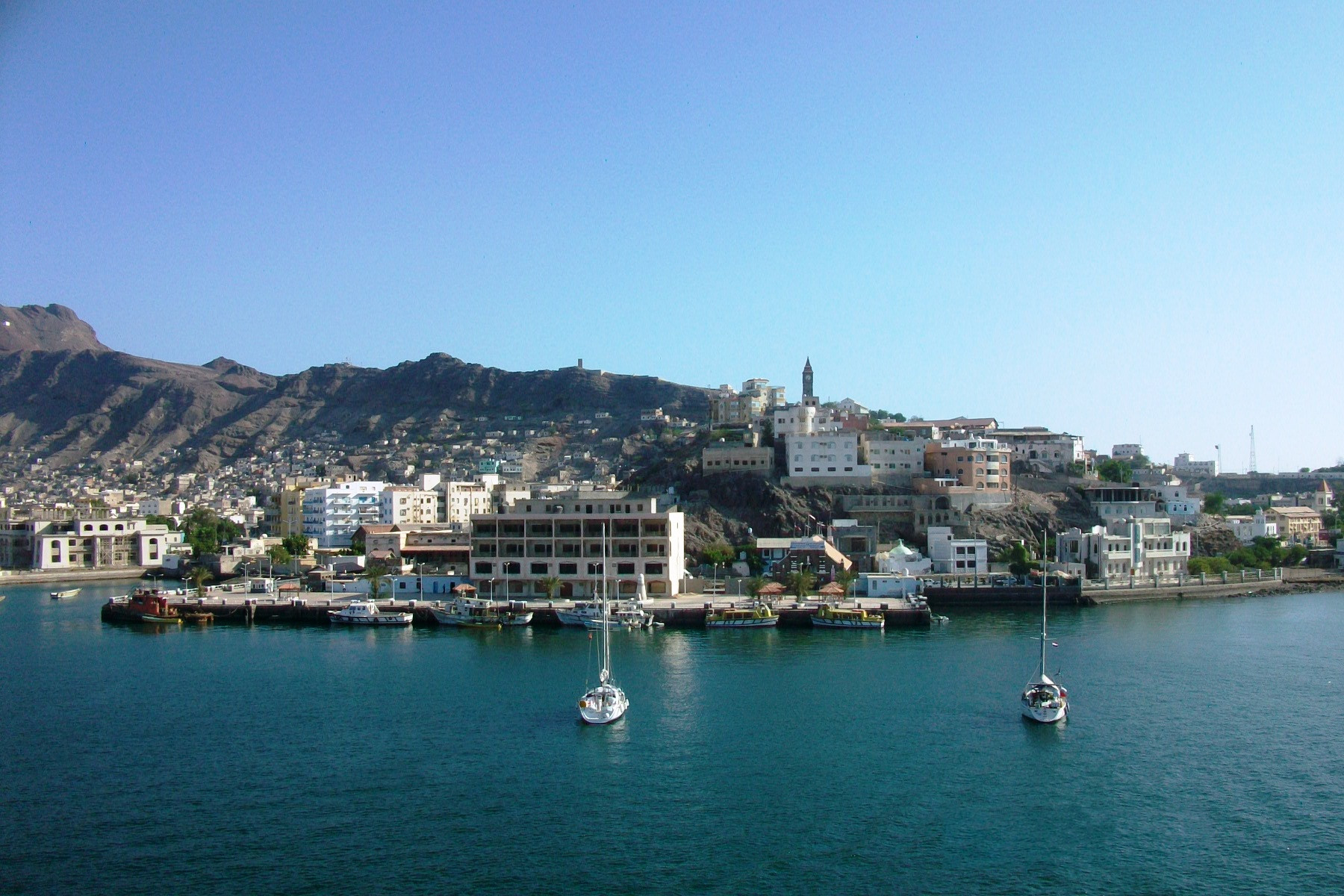
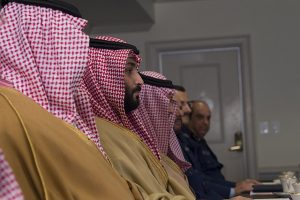
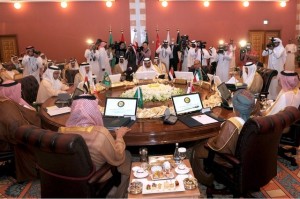
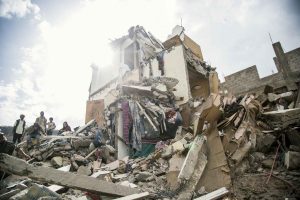
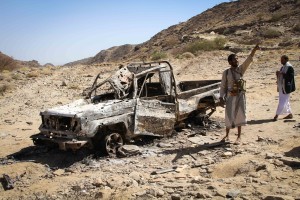
Why do you stress at end of your article that it/Yemen has to be a “single nation”? Southerners have the right to restore their pre-1990 state and to get independence from the North that invaded them in 1994 and imposed unity by military force. This is a simple right of any people to self-determination, isn’t it?